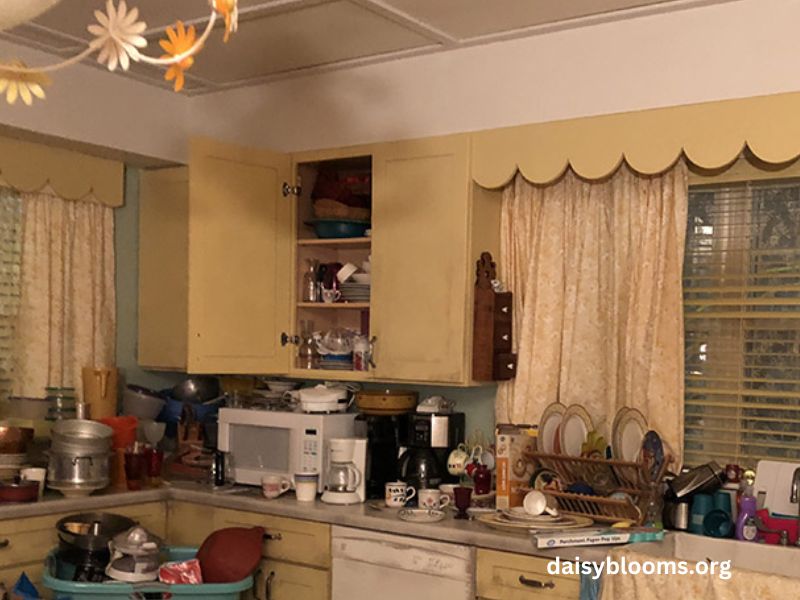The story of Gypsy Rose Blanchard has captivated the world, shedding light on one of the most shocking cases of manipulation and abuse. At the heart of this tragic narrative is the house where Gypsy Rose and her mother, Dee Dee Blanchard, lived in Springfield, Missouri. The residence, which initially appeared to be a loving and comfortable home, was ultimately revealed as the setting of a sinister manipulation scheme that kept Gypsy Rose captive in a world of false diagnoses and medical abuse.
The Origins and Design of Gypsy Rose’s Home
Built in 2007 by Habitat for Humanity, Gypsy Rose Blanchard’s home was intended to offer the family a fresh start after their previous house was destroyed by Hurricane Katrina. The modest 1,080-square-foot home was designed with accessibility in mind, given Gypsy Rose’s purported medical conditions, including leukemia, muscular dystrophy, and a variety of other ailments. The house featured a wheelchair ramp and other accommodations to make Gypsy’s life easier—yet, the reality was far from the story being portrayed.
On the outside, the home was adorned with pastel hues, particularly a bright pink color that reflected Dee Dee’s personality. Inside, the layout was simple but designed for Gypsy’s supposed needs. A cozy living room filled with medical equipment gave the illusion that Gypsy required constant care. The kitchen, decorated with cheerful Mickey Mouse decals, seemed to represent a happy home. However, this cheerful atmosphere was part of Dee Dee’s master plan to create a façade of normalcy while controlling every aspect of Gypsy’s life.
The Manipulative Design of the House
The interior of Gypsy Rose’s home played a key role in the elaborate deception orchestrated by her mother. The décor—filled with girly, childlike themes and medical paraphernalia—reinforced the image of a young girl struggling with serious health problems. The home’s design was specifically crafted to support Dee Dee’s lies about her daughter’s illnesses, enabling her to manipulate those around them.
Gypsy Rose’s bedroom was a perfect example of the manipulation at play. Adorned in a princess theme with a flowered four-poster bed, the room appeared sweet and innocent. However, this seemingly charming space was a prison, a place where Gypsy Rose was confined to a role as a sick child far older than she appeared. Dee Dee’s control over her daughter’s life extended to every corner of the home, from the bathroom to the bedroom, contributing to the twisted narrative of Gypsy’s “illnesses.”
The Removal of the Wheelchair Ramp
After the tragic events that unfolded in 2015, the house became a site of fascination for many. The former home of Gypsy Rose Blanchard and her mother, Dee Dee, was sold, and the new owners made significant changes to the property. The wheelchair ramp, which had been a constant reminder of the false medical narrative, was removed. The house, once painted in bright pinks and purples, was repainted a more neutral pastel blue. These changes symbolized the attempt to erase the dark history embedded in the house’s walls while moving on from the past.
Yet, no matter how much the property was altered, the sinister past it holds continues to resonate with those familiar with the story. The home remains forever tied to the shocking truth of Gypsy Rose’s life—one that was built on lies and manipulation.
The Cultural Impact of Gypsy Rose’s Story
The story of Gypsy Rose Blanchard and the role her home played in her captivity has sparked discussions across multiple platforms. It has brought attention to the psychological condition known as Munchausen syndrome by proxy, where a caregiver fabricates or induces illness in another person to gain attention and sympathy. Dee Dee Blanchard’s actions—carefully crafting a web of lies about Gypsy’s health—are a disturbing example of this disorder.
The house itself became more than just a place where the Blanchards lived. It symbolized the control that Dee Dee had over her daughter’s life and was a physical manifestation of the lies that defined Gypsy Rose’s reality for so many years. The media attention and public fascination with the house and its significance have led to documentaries and TV specials about the case, further emphasizing the cultural impact of Gypsy Rose’s story.
Conclusion: The House That Held a Dark Secret
The home that once appeared to be a typical, if eccentric, suburban residence has come to embody much more than just a place where Gypsy Rose Blanchard lived. It stands as a symbol of manipulation, control, and the heartbreaking reality of a young woman’s life trapped by a web of deceit. The house’s design, with its colorful walls and childlike décor, masked the horrific truth of Gypsy Rose’s circumstances.
As time goes on, the property has changed hands and been altered, yet the dark history it holds remains unforgettable. Understanding the significance of Gypsy Rose’s former home allows us to grasp the depths of the abuse she endured and the extent of her mother’s control. It serves as a haunting reminder of the dangers of unchecked manipulation and the lengths some individuals will go to maintain power over others.


